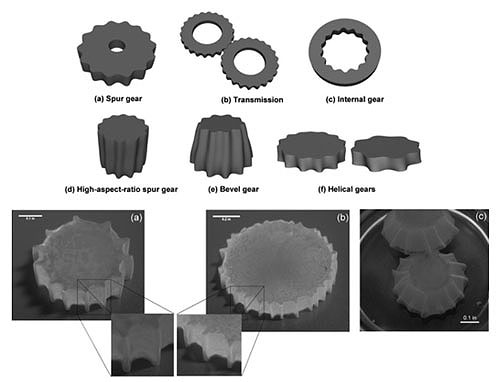There’s been a breakthrough in the production of tiny gears used in medical instruments and electronic mechanisms. July 23, the NewScientist printed an article about a new technology which enables gears and cogs to make themselves.
The components are formed from discs that buckle into shape after a change in temperature, and the team behind the study says the technique can produce complicated bevels or curves that are difficult to produce with traditional methods.
For a decade, engineers have been experimenting with materials that spontaneously bend into shape. A thin metal film deposited on top of a heat-expanded polymer such as PDMS will buckle into an ordered array of wrinkles when the polymer is cooled down.
Xi Chen‘s team at Columbia University in New York City realized the technique could be used to produce the regularly spaced teeth of a gear without having to rely on costly etching and grinding methods.
So far the researchers have tested their technique at the macro scale, producing simple and beveled gears 6 to 25 millimeters across, but Chen says it can be readily extended to the sub-micrometer scale – something he plans to do soon.
Do think micro- and nano-manufacturing will be a viable business for your manufacturing operation in the next few years?
Article by Colin Barras
Source: NewScientist
Link to full article: NewScientist


No Comments
I don’t have a lot of experience with gears, just some low-level involvement in the procurement of a couple gears for a diesel fuel pump some years ago. What I learned is that gears have many parameters that control complicated geometry, which is difficult to manufacture without specialized equipment and know-how.
I wouldn’t think the items in these pictures were gears without being told they were. They have significant variations in the distances between teeth (pitch), plus other variations. Any precision mechanism would be expected to require some accuracy in the gears utilized; I could see these gears used in a Rube Goldberg mechanism, but not a CMM, CNC machine, or any other precision device.
Based on the explanation of how this technology works, I think the geometry of these gears is dependant upon the size, hardness, surface finish, grain structure, and other characteristics. All of these variables in combination may be impossible to control accurately enough to make a precision part.
I guess I’ll wait and see if anyone is able to develop this technology enough to be practical.